A sample of projects undertaken during 2023/24
The MMus Project provides an opportunity for students to design and deliver a research project that responds to particular aspects of their artistic concerns. Most, but not all, are delivered as practice research, encompassing live or recorded musical outcomes and commentary. The Project is supported by an extensive seminar and workshop programme across the year, as well as one-to-one supervision, delivered by a team of eight researchers with wide experience of the field. Students are encouraged to be creative with the media chosen for submission, with online formats becoming increasingly common.
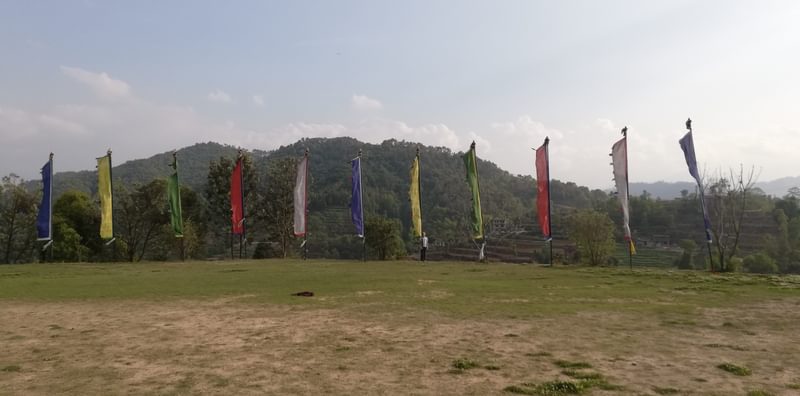
ELECTRONIC DHARMA
Archie John
My research investigates the influence of Tibetan Buddhism on the aesthetics of Western contemporary music, with a particular focus on the electronic and electroacoustic music of Eliane Radigue and Jonathan Harvey. Since the annexation of Tibet by the Chinese Communist Party in 1951, Tibetan Buddhism has gained an increasing influence on Western society, particularly growing during the countercultural movements of the 1960s and 70s. This coincides with the flourishing use of electronics in contemporary music, with composers such as Radigue and Harvey engaging in extensive exploration of the possibilities provided by new technology, in conjunction with developing their own individual Buddhist practices. There is almost no scholarly work exploring the Tibetan influence on 20th century European contemporary music as the focus on the development of (and reactions against) serial composition has tended to dominate the intellectual landscape. However, for me, the influence of Tibetan Buddhism on contemporary music is a key thread in understanding the musical landscape of the 20th and 21st centuries. Through my MMus project, I will explore this narrative thread and present my findings in writing and my own portfolio of compositions reflecting upon these aesthetic developments.
Sonifying Crystal Structures
Hani Elias
Sonifying Crystal Structures is a project based on the idea of translating crystal structures into sound. It will take the form of a musical recording, made up of orchestral samples as well as synthesised sounds. The project aims to use sound to explore the crystals involved in the oxidation of iron (commonly known as the formation of rust). By imagining each bond between atoms as a string that could be plucked, the crystals involved in the rusting process become microtonal webs which constantly shift between one another. Taking the paths of electrons through the crystals as a guide, the piece weaves its way through a series of gradually morphing textures. Sonifying Crystal Structures has developed from a collaboration with physicists at Oxford University, and forms part of an open-ended chain of projects exploring interactions between science and sound.
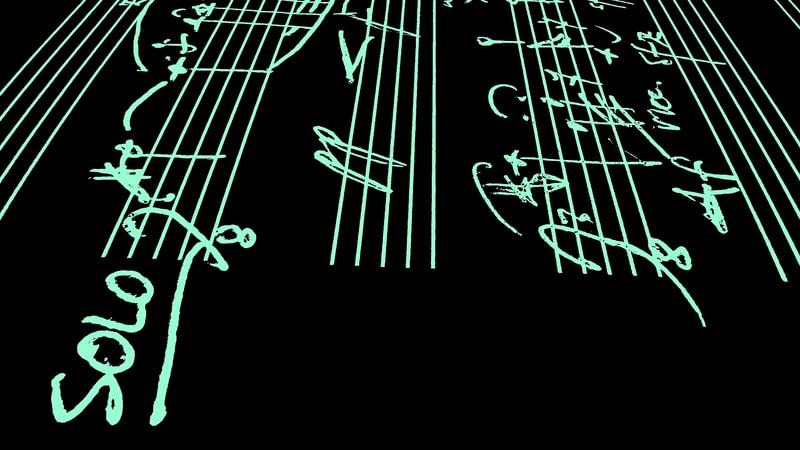
Miniatures For Minor Orchestral Instruments
Shin Kim
Even without the music of other cultures and eras, there are still dozens of different instruments that are normally used in modern Western orchestras. If we include the whole range of extended instruments as well, the number arguably becomes almost innumerable. However, not all of these instruments are typically utilized as solo instruments. For example, we can easily think of compositions for solo violin or clarinet, whereas it is relatively difficult to find and list those for, amongst others, piccolo, contrabassoon or bass trombone.
For my MMus project, I would like to compose miniature solo pieces for these ‘neglected’ instruments to contribute to the broadening and enriching of their repertoires, and to explore musical and compositional possibilities for myself and for other composers. This is a step toward my ultimate goal: to discover new ways to approach orchestration and instrumentation.
A Broken Dream: live performance with self-portraits from Spanish art
Xiaowen Shang
As a performing pianist, I am very sensitive to images – I have specific pictures or visual stories in my mind while I am playing. Because of this instinctive engagement with art, I am particularly interested in how to combine the two genres in order to replicate what is going on in my mind. The inspiration of the project comes from my daily life experience – after a long day full of music, I have illusions or dreams that the music and images are running around in my head, unbidden.
I find self-portraits fascinating because they reveal how artists view themselves through their artistic expression. For me, music is similarly akin to a mirror, remaining honest and clear, reflecting the composers’ thoughts and their true selves. As the curator and performer of this project, I want to bridge this reflective thinking through my performance and design of the event.
The event is focused on Spanish music and visual art - artists include Picasso, Dalí, Mompou and Soler. By interweaving them with visual projections, I assemble fragments of memory to create a complete journey.
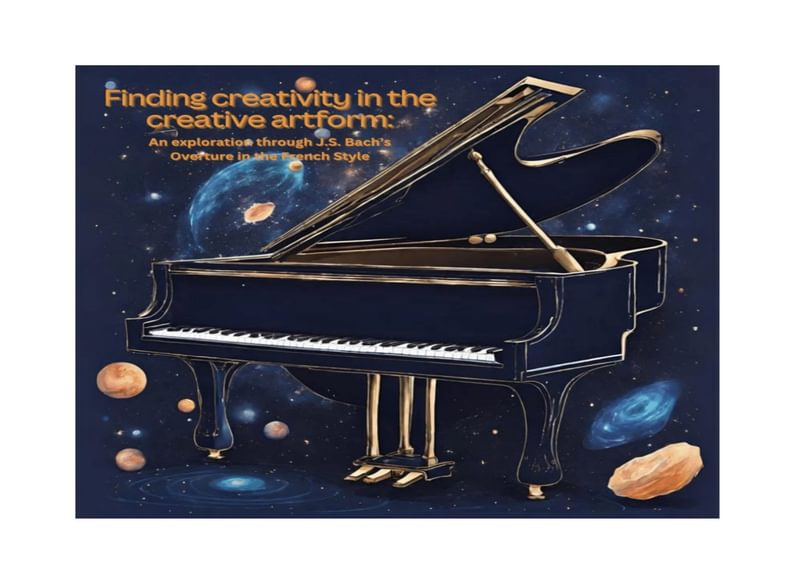
Finding creativity in a creative artform: An exploration through J.S. Bach’s Overture in the French Style
Alexia Eleftheriadou
In this research project, I will attempt to challenge what is, in my experience, a tendency toward ‘correctness’ and ‘perfection’ in classical music practice. The impact of this on learning methods, while effective in certain respects, can risk hindering creativity and imagination and may not necessarily nurture a deep understanding of the music.
The project will focus on exploring alternative approaches by infusing my practice with improvisational techniques and nurturing an overtly creative approach, using J. S. Bach’s French Overture as a vehicle. The aim is to deepen my connection with the piece, foster a profound understanding of its harmony, structure, and other musical elements, and find greater freedom in my playing by inspiring a more imaginative and mindful approach to interpretation.
I hope that this project will be just the start of a practice that enriches my musical experience and paves the way for a more innovative and explorative mindset in my learning.
Soprano Legacies: Unveiling the Women of the Coloratura Fach
Imogen Baker
My research project delves into the captivating history of women who have defined the coloratura fach by portraying iconic roles that have left an indelible mark on opera. Through exploring a range of sources, I aim to illuminate the lives and contributions of remarkable individuals such as Hermine Bosetti, the trailblazing Zerbinetta in Strauss's Ariadne auf Naxos; Madama Vasnier, muse to Debussy for his Chansons de Jeunesse; and Josepha Hofer, Mozart's unforgettable Queen of the Night in Die Zauberflöte. By creating a comprehensive website resource, I intend to provide a platform for their stories to be celebrated and documented for others.
Beyond the scope of my postgraduate programme, I envision this project evolving into a dynamic hub for enthusiasts and scholars alike, fostering deeper insights into the evolution of the coloratura tradition. Additionally, I plan to enrich the website with my recordings of the iconic songs and arias performed by singers in this fach, further enhancing its educational and cultural value. Through this endeavour, I aim to contribute to appreciating and understanding these extraordinary women and their enduring legacy in opera.
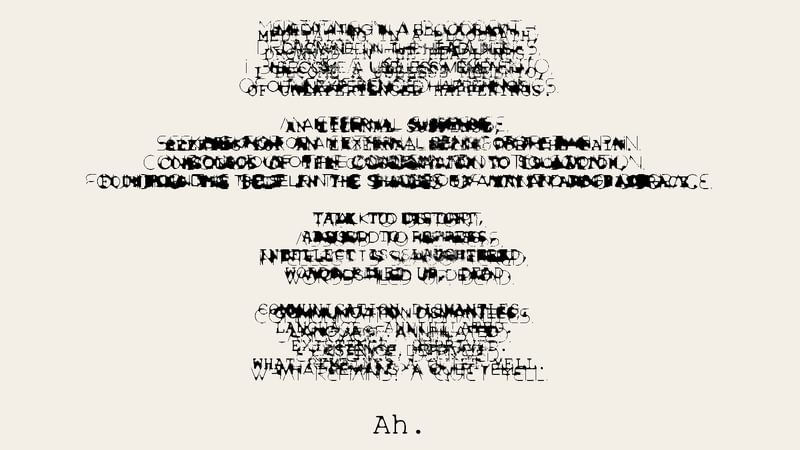
A DYSTOPIAN ANTHEM, FOR TWO DRUMS, AN ALTO SAXOPHONE AND AN ELECTRIC GUITAR
Ashkan Layegh
I wanted to explore the idea of duality in a 40-minute composition/performance, on the following three levels:
- Improvisational/Compositional: Investigating the relation between a highly detailed score and live-action music making, their boundaries, and the possibility of blurring them, to the extent where distinguishing them becomes almost impossible; can improvisation and composition be doppelgängers?
- Instrument/Performer: The presence of two similar instruments on the stage, with semi-improvised/semi-notated material, leading to exploration of the characteristics of the performers, through various means of composition and collective music making.
- Individual/Collective: Questioning the essence of anthem as a form of ritual, in the age of mass media— and the annihilation of the individual and the collective— which brings the question of identity, and an abstract representation of doppelgänger, and vice versa.
Listen to a recording here.
The ‘Collective’: developing artistic agency, collaborations and local resilience
James Garner
I’m exploring the process of establishing an artistic collective in Stoke Newington. My project will culminate in a concert of new music exploring snapshots of Hackney's unique history, composed/devised by key collaborators and myself.
My research involves examining literature about artistic collectives and the ‘alternative classical’ scene in London; and conducting interviews with creative producers and artists. I’m looking for ways to break down barriers between audiences and musicians, opening up the process of music making and demystifying contemporary classical music.
2024 marks a decade since founding a contemporary music theatre company with 3 friends, with which we mounted 9 productions. More recently, within the UK music scene, we've witnessed the fall or neglect of multiple organisations, including Britten Sinfonia, Psappha Ensemble and Iklectik. These personal and global events have motivated me to return to self-generating collaborative work.
With my close artistic partners, Owen Spafford and Carla Huhtanen, I plan to develop the usefulness of the collective locally, embedding it within Stoke Newington where it can strategically partner with local schools, businesses and community groups. I aim to approach a home venue for the collective’s performances, develop an initial business plan, and investigate acquiring charitable status for the collective in the long term.

Try The Grey Stuff: Writing Dramatic Vocal Music Between Opera and Musical Theatre
Ben Hoppe
Musical works written for the stage have fascinated me for as long as I can remember. I’d even cite early experiences performing in opera and musical theatre as the reason I’m a composer today. From Die Zauberflöte to Cabaret, Elektra to A Chorus Line, the pieces I hold most dear come from very different musical areas. Or is that not entirely the case?
Through my Master’s project, I’m hoping to shed some light on musical commonality between opera and musical theatre. To me, these two artforms exist on a spectrum rather than as separate entities. My own vocal music has (albeit subconsciously) begun to take this idea into account, so I’m looking to pinpoint specific qualities that allude to this connection.
I’m also hoping to do this as a means of breaking down the artificial boundaries we hold between opera and musical theatre. Certain stigmas exist, and through my project I wish to decipher how we got to this point of polarization and how we can get past it.
THE SINGING BASSOON: FRENCH WIND MUSIC FROM 1770-1870
Emily Dore
My project explores chamber music in France written between 1770-1870 which features wind instruments in a soloistic capacity. In particular, the works of François Devienne and Étienne Ozi will be examined. I aim to broaden the available chamber repertoire beyond the standard wind quintet model, both for bassoonists such as myself and for other wind instrumentalists. For me, the wind music of this period in France is as artistically valuable as the string quartet repertoire, song cycles or other celebrated ensemble formations. However, it is rarely programmed in British chamber music institutions and festivals.
Following an investigation of different performance practices for this repertoire, I aim to workshop programmes of music for mixed ensembles. A primary consideration will be instrumentation within the ensemble and additionally instrumentation from a Historically Informed Performance perspective. What are the most effective instrumental combinations to programme and perform this less familiar repertoire? In what context could this repertoire be effectively shared with an audience? My ultimate goal is to form a new chamber ensemble, specifically dedicated to performing this repertoire.

Writing the Unthinkable
Toby Anderson
In April of last year, the international classical community was gripped by the news story of a woman allegedly having a ‘loud and full body orgasm’ during an L.A. Philharmonic performance of Tchaikovsky’s Fifth Symphony at the Walt Disney Concert Hall. Beneath the various conflicting eye-witness accounts and twitter arguments lay the fundamental question of why. Is classical music, in fact, sexy? Deeper inspection of this question points to a whole series of contradictions that lay at the heart of the ways in which we relate music to our own bodies and the bodies of others. Drawing on queer theory, feminist new materialism, and the philosophy of Gilles Deleuze, I hope to analyse the ways in which concert etiquette, musical pedagogy, grant application forms, composition competitions, auditions, and other material institutional artefacts define and control how we engage with music at the somatic level. As a composer, however, the heart of this project lies in channelling this analysis into an exploration of the ways in which one could cultivate a way of writing music that directly confronts the fleshy materiality of the body. In short, what would a ‘somatic composition’ look, feel, taste, smell, and sound like?
A GLANCE AT PROTEST MUSIC
Mihaly Gyorfi
We are living through politically troubled times: xenophobia, homophobia and antisemitism are on the rise, exploited by an increasing number of illiberal or outright authoritarian leaders around the world. Armed conflicts in Eastern Europe and the Middle East are becoming the bloodiest in a generation and have also begun pulling in the larger militaries of the world. The world economy is under pressure from a recent pandemic, high inflation and stagnant wages. And all of this while the Damoclean sword of climate change hangs over us. This echoes the landscape of 100 years ago, in the Germany of the 1920s and 30s, when high inflation, widespread joblessness and a recent armed conflict created the atmosphere which eventually led to genocide and a second world war.
My project is about the cabaret music of Weimar Berlin. I want to look at how musicians of this uninhibited period in cultural history reacted to the often violent clash of progressive and conservative values in their society and the foreboding sense that their tomorrow might be worse. This project could branch out into exploring the various forms in which music was used throughout the 20th century as a means of protest and how music today is reacting to our similar predicament.
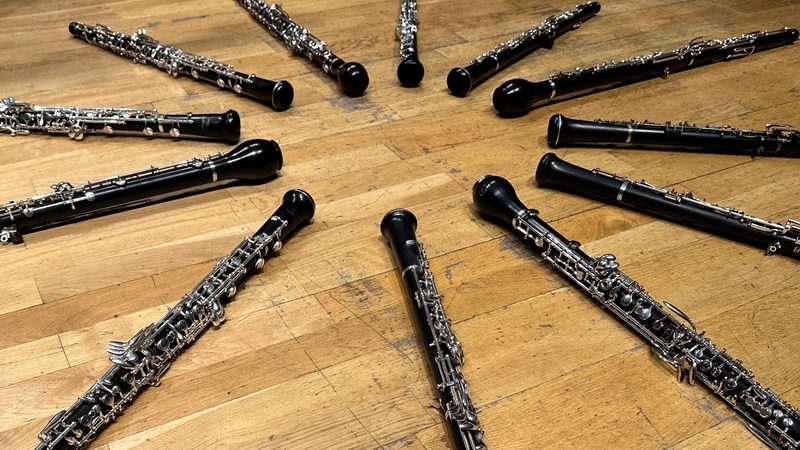
Owning a piece of ‘Mount Everest’ - A transcription of the D minor Violin Partita of Bach for an oboe trio
Alex Wong
The world-wide lockdown during the COVID years has disrupted the artistic scene in unimaginable ways. Although musicians lost the chance to perform on their precious stage, many of them ‘re-invented’ chamber music with the help of technology – people were able to take part in music making across spatial and temporal boundaries and share their performances with a virtual audience.
Some chamber music repertoire was written for a combination of instrumentalists that happened to be available at the time – I immediately think of Schubert’s ‘Trout’ quintet. This was how I felt when I was on my own in lockdown, where the only available instruments were those from the oboe family. Chamber music for oboes and cor anglais has not been popular among composers, and we oboists have to make our own arrangements.
However, when I transcribe an existing piece for oboists, do I add or remove ideas and materials from it? Would it still be regarded as the original composition? Or is it damaged? Or ‘de’-composed? Or ‘re’-composed? Can new insights be created? Can we oboists truly own the new piece? I am planning to embark on this journey with the ‘Mount Everest’ of the solo violin repertoire, the D minor Partita by J. S. Bach.
The relationship between arrangement and composition
Marketa Concova
For my MMus project I have decided to explore the theme of recomposition/arrangement, using a piece of my own – Six Piano Etudes. Originally composed for solo piano, I am interested in approaching the composition with a different perspective by recasting it for a chamber ensemble (preferably, 1 flute/alto, 1.1.1; 1.1.1; 1 percussionist; 1.1.1.1.1). Although I plan to slightly alter the material and perhaps add one slow movement, I will aim generally to maintain the current structure of the piece. Formally deriving from variations, all the etudes are built from the short interlude material separating each etude. The quotation and the shape of the theme is continually altered. It explores a range of styles and genres by combining jazz, quasi-impressionism, romanticism, and so on, and with each succeeding number its length decreases. The piano part needs to preserve its primary role, and will be treated as a soloist in a concerto. The final outcome and presentation of the piece will be through a workshop that will be recorded.

Shadowy Music and Storytelling
Fang-Lin Liu
My project will explore the relationship between music and storytelling. I have chosen Gaspard de la Nuit by Maurice Ravel as the repertoire for my research. It is based on three poems by Aloysius Bertrand which set up a background for the music, providing an inspiration for storytelling. Gaspard de la Nuit is built on a ‘night’ theme. I decided that shadow puppetry could provide an evocative way of enhancing the story of the music. The shadow puppetry team I found is a group of primary students in Taiwan. I like the idea of not working with professional puppeteers, as children have an innate creativity and imagination that adults often lose, and I thought they could therefore add a surprising new dimension to the project. My parents are going to help with the production, filming and editing the shadow puppetry.
The outcome of my project will be a live event – I will perform the piece alongside a shadow puppetry video. To develop the project, I am going to create a web post, containing my process, the thoughts of the primary school children, a snippet of the video as a teaser, and a space where the audience can leave their feedback. I hope this project will encourage participation from the audience, and that it will successfully blend music and storytelling.